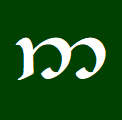5.80 Berry ᴱQ. aipio n. “cherry” A word appearing as ᴱQ. aipio “cherry, holy berry” in the Qenya Lexicon of the 1910s, a combination of ᴱ√AYA¹ and ᴱQ. pio “berry” (QL/34, 74). It was also mentioned in the contemporaneous Poetic and Mythological Words of Eldarissa and Gnomish Lexicon (PME/34; GL/18).
Paul Strack
Select Elvish Words 5.77-5.79: Nut, Oil
5.77 Nut Q. *pecco n. “nut” In notes from 1969, Tolkien had a word Q. pekkuvo “nut-hider” = “squirrel” (PE22/155). Since √KUB was “hide” in that document, the element pek- must be “nut”. Its form outside of compounds is unclear; the form pecco is a guess, originally suggested in a
Select Elvish Words 5.71-5.76: Fruit, Apple, Pear, Grape
5.71 Fruit ᴹQ. kuluma n. “orange [fruit]” A word for “an orange” (thus referring to the fruit) in The Etymologies of the 1930s derived from the root ᴹ√KUL “golden-red” (Ety/KUL). Conceptual Development: There was a noun ᴱQ. kulmarin (kulmarind-) “orange” in both the Qenya Lexicon and Poetic and Mythological Words
Select Elvish Words 5.65-5.70: Vegetables, Pea, Cabbage, Potato
5.65 Vegetables ᴱQ. kolosta n. “cucumber” An isolated word appearing ᴱQ. kolosta “cucumber” in the both the Qenya Lexicon and Poetic and Mythological Words of Eldarissa of the 1910s with no clear derivation (QL/47; PME/47). Neo-Quenya: I’d retain ᴺQ. colosta “cucumber” for purposes of Neo-Quenya as there are no later
Select Elvish Words 5.61-5.64: Meat, Fat, Broth
5.61 Meat ᴹQ. apsa n. “meat, cooked food” A noun for “cooked food, meat” in The Etymologies of the 1930s derived from the root ᴹ√AP (Ety/AP). The word apsa “meat” also appeared in notes on The Feanorian Alphabet from the 1930s and 40s (PE22/21, 50), though in the 1940s version
Select Elvish Words 5.53-5.57: Dough, Flour, Grind, Mill
5.53 Dough ᴹQ. makse n. “dough” A word for “dough” in The Etymologies of the 1930s derived from primitive ᴹ✶mazgē under the root ᴹ√MASAG “knead” (Ety/MASAG), where zg unvoiced to sk and then the sk underwent metathesis to ks. N. moeas n. “dough” A word appearing as N. moeas “dough”
Select Elvish Words 5.51: Bread
5.51 Bread Q. coimas (*coimass-) n. “life-bread, lembas” A Quenya term for “lembas” (Elven waybread) but of different etymological origins appearing in notes from the 1950s, a combination of √KOY “live” and a reduced form of massa or masta “bread” (PM/395, 403-4). As such, its stem form is likely to
Select Elvish Words 5.41-5.45: Meals
5.41 a Meal ᴹQ. mat (matt-) n. “meal, [ᴱQ.] meal time; ⚠️[ᴹQ.] food” A noun glossed “food, meal” in the Declension of Nouns from the early 1930s with a stem form matt- (PE21/27), clearly based on ᴹ√MAT “eat”. Tolkien specified that as the suffix -mat, it was the basis of
Select Elvish Words 5.34-5.37: Pitcher, Cup, Spoon
5.34 Jug, Pitcher ᴱQ. olpe n. “bottle” An isolated word without a root appearing as ᴱQ. olpe “bottle” in the Qenya Lexicon of the 1910s (QL/69). Neo-Quenya: I’d retain ᴺQ. olpë “bottle” for purposes of Neo-Quenya as we have no other later alternatives. ᴱQ. ulma n. “flagon, *pitcher” A word
Select Elvish Words 5.25-5.33: Oven, Pot, Dish, Bowl
5.25 Oven ᴱQ. urna n. “oven” A noun appearing as ᴱQ. urna “oven” in the Qenya Lexicon of the 1910s under the early root ᴱ√USU or ᴱ√UŘU [UÐU] whose derivatives had to do with burning (QL/98). Neo-Quenya: I would retain ᴺQ. urna for purposes of Neo-Quenya, reconceived of as a




